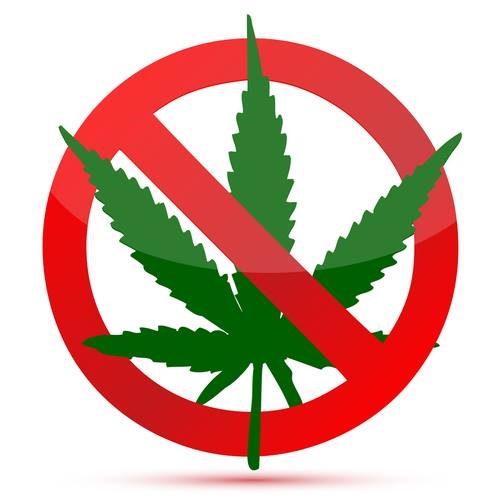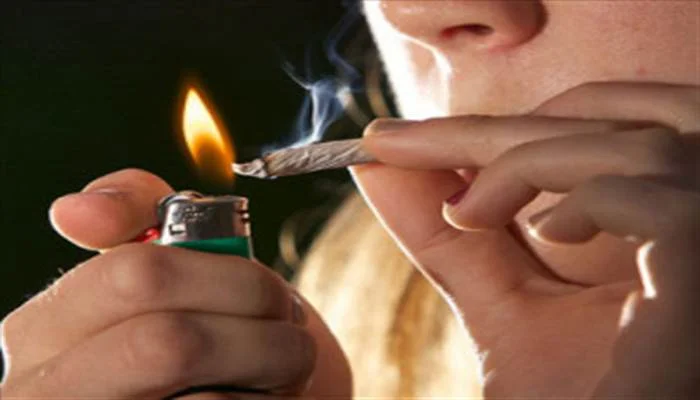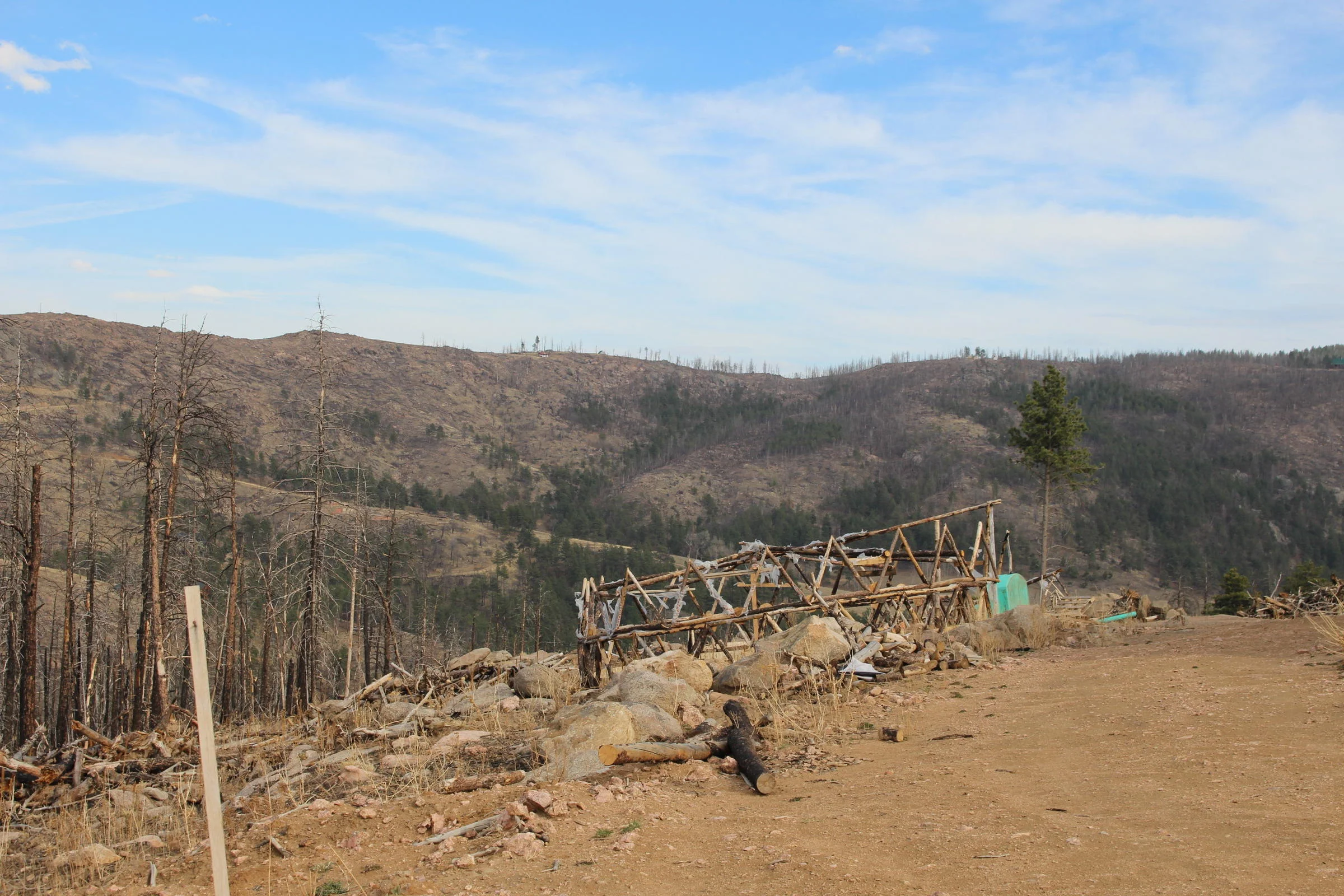The problem of increased marijuana use has origin in its purported use for pain, but the medical literature is completely void of evidence for the treatment of common pain conditions with cannabinoids or cannabis. Current medical literature suggests benefit in less common pain conditions, with products not commercially available in the United States, or with synthetic THC, not with dispensary cannabis. The variability of available products changes regularly and their use in medicine, particularly pain, is unproven. The end game is in the court of law enforcement, mental health providers, the medical community, and our educational systems, at unknown societal costs, which are only now becoming apparent.
Read MoreStay in the know with the latest on our fight against the legalization of marijuana
Have an article that you would like us to post? Share it on our Facebook page!
A tour of a Colorado Commercial Marijuana Operation→
/Two officers of the Marijuana Enforcement Division (MED) in Colorado started off the presentation by repeating how utterly impossible it is to regulate marijuana and keep all the rules and know all the enforcement measures they are supposed to follow (these are the people overseeing enforcement for the whole state.) They bragged that they now have 98 people in their office overseeing regulation but later in the day admitted that only 25% of those do on-site inspections statewide (3,000 facilities), the rest are trying to keep up with paperwork.
They cannot get to every site in the state for inspections (again – impossible) so they respond to complaints, spot-check and rely on other community entities to report anything they may find or see. The largest amount of complainants come from other MJ facilities trying to get their competition shut-down.
Read MoreA Teenager’s Lament→
/There is no limit to the genre of students which teen drug use has effected- the popular and the unpopular, the athletes as well as members of the robotics club, the dancers, the singers, the freshmen and the seniors– everyone is doing it. Ironically, even the leaders of my school’s ‘Students Against Destructive Decisions’ (SADD) are getting “turnt” on the weekends. While I would consider this to be a major form of hypocrisy, perhaps the bigger problem is that they don’t realize how destructive some of their decisions are…
Read MoreMarijuana, Legalization and the Workplace
/This year American workers tested positive for illicit drugs at the highest rate in 12 years with marijuana positivity increasing 75%. Being in construction and manufacturing business for over 40 years I know well the challenges of finding, training, and maintaining an effective workforce. There is also the demand for creating and maintaining a safe workplace. None of these business demands are assisted by having marijuana legalized.
Read MoreLegalized marijuana turns Colorado resort town into homeless magnet→
/Caleb Preston, a store manager in a gift shop and a former “street entertainer,” said the homeless and panhandling issue in Durango has gotten out of hand since the state legalized marijuana.
“Just this year there has been a major influx of people between 20 to 30 who are just hanging out on the streets,” Preston said. “The problem is while many are pretty mellow, there are many more who are violent.”
Read MoreDangers of Marijuana Experienced Firsthand→
/I recently finished my residency in emergency medicine and began to practice in Pueblo, Colorado. I grew up there, and I was excited to return home. However, when I returned home, the Pueblo I once knew had drastically changed. Where there were once hardware stores, animal feed shops, and homes along dotted farms, I now found marijuana shops—and lots of them. As of January 2016, there were 424 retail marijuana stores in Colorado compared with 202 McDonald’s restaurants.1
These stores are not selling the marijuana I had seen in high school. Multiple different types of patients are coming into the emergency department with a variety of unexpected problems such as marijuana-induced psychosis, dependence, burn injuries, increased abuse of other drugs, increased homelessness and its associated problems, and self-medication with marijuana to treat their medical problems instead of seeking appropriate medical care.
Read MoreTHC can't help PTSD, experts say→
/For every military veteran appearing in a Colorado public meeting to advocate for the right to use marijuana to treat post-traumatic stress disorder, mental health professionals throughout Colorado estimate they've worked with thousands whose pot use made their PTSD - and their lives in general - much worse.
Read MoreMarijuana and Alcohol DUI's Differ By Time of Day
/Marijuana and DUI fatal crashes by time of day are startlingly different. Marijuana fatal crashes dominates daytime populated rush hour traffic - before and after standard work hours. For 11 consecutive daytime one-hour time periods, 6am to 5pm, the percentage of marijuana crash fatalities exceeded DUI crash fatalities. DUI crashes dominate the evening hours and occur during some of the least populated road times. For 8 consecutive evening time periods, 8pm to 4am, the percentage of DUI crashes exceeded marijuana crashes.
Read MoreKicking Pot To The Curb
/Renowned Alzheimer’s researcher Dr. Vincent Fortanasce says marijuana use may lead to the disease
An estimated 200,000 people in the United States under age 65 are living with younger-onset Alzheimer’s disease. And hundreds of thousands more are coping with mild cognitive impairment, a precursor to Alzheimer’s and other dementias.
“It’s beyond epidemic proportions. There truly is a tidal wave of Alzheimer’s disease,” said Dr. Vincent Fortanasce, a clinical professor of neurology in Southern California who is also a renowned Catholic bioethicist, author and radio host.
Fortanasce, a member of Legatus’ San Juan Capistrano Chapter, for several years has studied Alzheimer’s disease, its underlying causes and treatments. Through his research, he believes there may be a link between chronic use of marijuana — especially when started at a young age — and Alzheimer’s.
Read MoreDrugged driving eclipses drunken driving in tests of motorists killed in crashes
/Of the drivers who tested positive for drugs, more than a third had used marijuana and more than 9 percent had taken amphetamines.
“As drunken driving has declined, drugged driving has increased dramatically, and many of today’s impaired drivers are combining two or more substances,” said Ralph S. Blackman, president of the foundation, a nonprofit founded and funded by a group of distillers.
Read MoreMarijuana laws hard and expensive to enforce→
/While serving on Gov. John Hickenlooper’s task force to implement Amendment 64, I quickly learned that we were changing more than our laws, we were engaged in a huge paradigm shift which was the creation of what would be a new marijuana culture. To this day, Colorado law enforcement struggles with the litany of conflicts created by “legal marijuana.”
Read MoreDon't Let Anyone Tell You Youth Marijuana Use Hasn't Gone Up in States Like Colorado
/Despite claims to the contrary by Colorado Governor John Hickenlooper, and other officials, the nation's only representative sample of people in U.S households released special Colorado state data finding increases in marijuana use.
Colorado past-month marijuana use among 12-to-17 year-olds saw a significant increase, from 9.82% to 12.56%, according to the most recent year-by-year comparison looking at pre-legalization data.
The National Survey on Drug Use and Health data also found that Colorado teens and adults use marijuana at a higher rate than the rest of the country. Colorado legalized marijuana in 2012 and implemented legal marijuana stores in 2014. At the same time, the sales of alcohol shows a slight increase.
Read MoreThis Is Your Teenager's Brain on Pot→
/Liz, now 18, who started smoking weed regularly at the age of 12 as a coping mechanism, as she puts it, for the upset she felt around her parents’ divorce.
“At first I kind of just felt, like, very… relaxed, spacey,” she says. “After a while, after I started using day after day, I kind of just felt more lethargic. No motivation for anything. Very apathetic. And I felt, like, a lot of paranoia along with that.” By her early teens, Liz had developed a pot habit — not to mention an eating disorder and a self-harming problem — severe enough to land her in a residential treatment program, the Newport Academy.
“I realized that I had a problem with marijuana when I found that I couldn’t be comfortable when I was sober,” she tells Yahoo, adding that the softening marijuana laws across the country are sending what feels to her like “a mixed message” about the safety of weed.
Read MoreTeens tend to think marijuana use is no big deal, but they’re wrong.→
/While teenagers might be binge-drinking less and having less sex than the previous generation did, marijuana use among teens, which had declined from the late 1990s through the mid-to-late 2000s, is on the rise again. This is a problem because, despite our culture’s increasingly casual attitudes toward pot, research suggests that marijuana use can damage the developing teen brain.
If kids are behaving more conservatively than their parents did as teens and engaging in fewer risky or harmful activities, why are they smoking more pot? Why do 60 percent of high school seniors say they think marijuana is safe? And why are more of them using marijuana than smoking cigarettes or drinking? How have our kids gotten the idea that pot is no big deal?
Read MoreMarijuana and the Heart
/Public opinion of marijuana has improved greatly with more then half of states now having the drug legalized in some fashion. This sudden swing in favorability is matched by the growing erroneous belief of the public that marijuana is relatively benign, especially compared to currently legal substances. This is effective yet extremely flawed logic that greatly hinders the spreading of actual scientific evidence on the dangers of pot. One such dangers is the increased risk of heart attack. We have curated some stories and studies on this danger which you can find below.
Read MoreMarijuana abuse linked to increased MI risk→
/Washington – Marijuana abuse was independently associated with an eye-opening doubled risk of acute MI in a large, retrospective, age-matched cohort study, Ahmad Tarek Chami, MD, reported at the annual meeting of the American College of Cardiology.
Read MoreIn Colorado, It's Still The Wild West For Home-Grown Marijuana→
/Since 2014, when Colorado’s legal, recreational marijuana sales began, Rist Canyon residents say they’ve seen the arrival of a handful of new neighbors. These newcomers buy a plot of land, and rather than build a house and move in, they put up greenhouses or start planting marijuana right in the ground.
Read MoreNew report by National Families in Action rips the veil off the Medical Marijuana Industry
/The NFIA study, Tracking the Money That’s Legalizing Marijuana and Why It Matters, exposes, for the first time, the money trail behind the marijuana legalization effort during a 13-year period. The report lays bare the strategy to use medical marijuana as a runway to legalized recreational pot, describing how financier George Soros, insurance magnate Peter Lewis, and for-profit education baron John Sperling (and groups they and their families fund) systematically chipped away at resistance to marijuana while denying that full legalization was their goal.
Read MoreDon’t let Big Marijuana prioritize profits over public safety
/Simply put, the current fragmented patchwork of laws governing marijuana in states is unsustainable. Despite the oft-repeated refrain that marijuana enforcement is an issue of “states’ rights,” the consequences of legalization are not confined by geographic borders. Since Colorado legalized, marijuana has streamed into neighboring states and emboldened drug trafficking organizations there. In fact, in Nebraska and Oklahoma, the inflow of marijuana trafficking has been so dramatic that the states sued Colorado. Interstate drug tourism is thriving, with companies in states with legal pot advertising across state lines and online.
Read MoreIt’s not ‘just’ marijuana
/That father wanted something I could not give him, beyond a hug and shared tears, and consideration for his agony. He wanted the moment back. The earlier moment. He wanted his son back.
That was almost 20 years ago. The nation had lost 14,000 kids to overdoses that year. Congress wrote and passed the Drug Free Communities Act of 1997, Mental Health Parity Act of 1996, the National Youth Anti-Drug Media Campaign, and federal anti-drug trafficking laws, including against trafficking marijuana. And drug abuse went down — markedly.
Read More




















